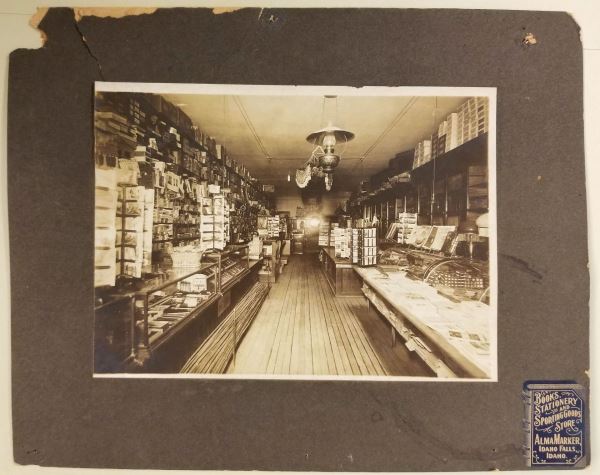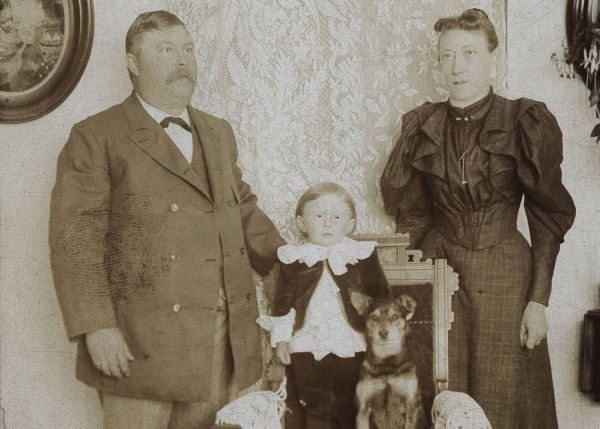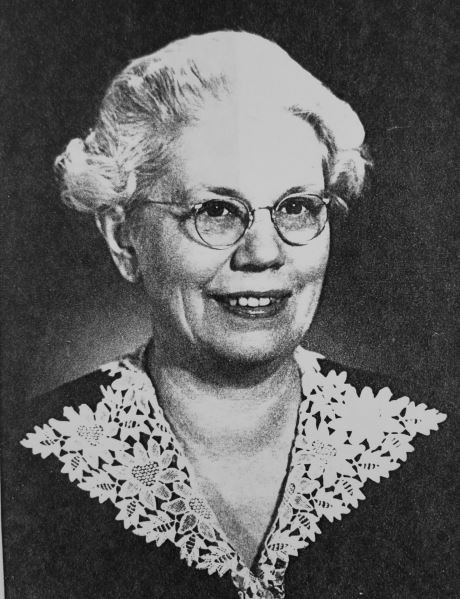
Alma Marker (1859-1956)
To do what you love and make it work financially—that’s the dream. Alma Marker was an accomplished violinist above all else. He loved music, but Eagle Rock was a dusty frontier town in 1882. How much was music needed, really, in an isolated spot where even the bare necessities could not be taken for granted? Who there could really appreciate his Stradivarius?
Marker arrived in Eagle Rock at age 22, armed with general merchandise he sold out of trunks on the street while building a storefront.
He sold books, stationery, school supplies, guns, tobacco, clocks, jewelry… and music. A savvy marketer, Marker knew his audience. He called his new store a general store in some ads, focusing on the staples that probably provided his most stable income.
Other ads, however, led with hand-drawn pictures of drums, harps, and woodwinds. Those ads called it a “music and variety” store, and emphasized the instruments, the strings and trimmings, orchestra and band music, sheet and book music, and even Crown pianos and organs. His love comes through in those ads, and in the music he composed with a calligrapher’s hand—songs like “Idaho Falls Quadrille,” almost certainly written for “Alma Marker’s Orchestra,” which seemed to play every ball and community event in the town’s early history.
You don’t picture a music shop in the old West, but Marker made it work, and remained in business until his retirement in 1938, after more than 55 years of living the dream.

Louis Elg (1853-1926)
Louis Elg might just be the embodiment of the American Dream—the expanded version wherein the immigrant hero doesn’t just make it big. He also struggles in the beginning, and in the end, he gives back to his community.
Born in Sweden, Louis (then Lars) suffered an early blow when his father died, leaving the 14-year-old to provide for his seven younger siblings. Elg began work at a nail factory, then learned the blacksmith trade. He spoke no English when he arrived in the United States at 21, working his way slowly west from Chicago through Iowa, Nebraska and Wyoming, before coming to Idaho Falls on a railroad job.
Elg settled here, and first opened a saloon, then a drug store at what is now Park and Broadway. He did well. Elg’s store was the first business in the city to install gas lights, a telephone and a soda fountain. He bought up land throughout town, as well as a 160-acre farm. He opened branch stores and had mining interests.
Then in 1900, Louis Elg was elected to Idaho Falls’s first city council, where he served faithfully for 10 years, became council president, and was appointed mayor when the incumbent, E.P. Coltman, died in office. Elg served as mayor of Idaho Falls for only about six months, but his administration oversaw incredible progress in rail travel, parks and recreation, power, sanitation and more.

Marion Orr (1892?-1954)
Marion Orr arrived in Idaho Falls in 1909 with her parents and younger sister, Elizabeth. Already 17, Marion finished up at Idaho Falls High School, where classmates described her as “just the quiet kind, whose virtues never vary.” Marion pursued a degree in “library science” from Washington University in St. Louis, then earned a two-year apprenticeship back in Idaho Falls.
Orr quickly became head librarian at the brand-new Carnegie Library, a post she held from 1917 until her death in 1954. In this capacity, in addition to ordering and shelving books, she made the community smarter by organizing book drives, teaching research skills and public speaking to local students, advocating for new libraries and advancing literary societies. She also served as vice president of the Pacific Northwest Library Association.
Orr was popular around town and was known to be able to “get anything she wanted out of the city council.”
In her down time, she devoted decades of her life to advocating for women in the workplace through the Business & Professional Women’s Club. She served as president twice and convened meetings in her family home—the same 11th Street house their father had built upon their arrival in 1909, and which the sisters shared together—just the two of them—for the remainder of their lives.
Research for this story was contributed by Carrie Anderson Athay, Museum of Idaho.
Click here to read more of the November issue of Idaho Falls Magazine.